
Circle of representatives meeting at Bhaikaka Krishi Kendra. This outdoor meeting space includes a floor made of mud and cow dung, and benches made from teak trees grown on the farm.
On the night of November 3rd, I arrived in Gujarat, a southwestern state in India, 36 hours after I left my home. Outside the Ahmedabad airport terminal, I met three leaders in the Indian biodynamic movement who had all just arrived from their home states, and together we rode to Anand. In the morning, we joined several dozen others at Bhaikaka Krishi Kendra (BKK), perhaps the most famous biodynamic farm in India, which is centrally featured in the film One Man, One Cow, One Planet.
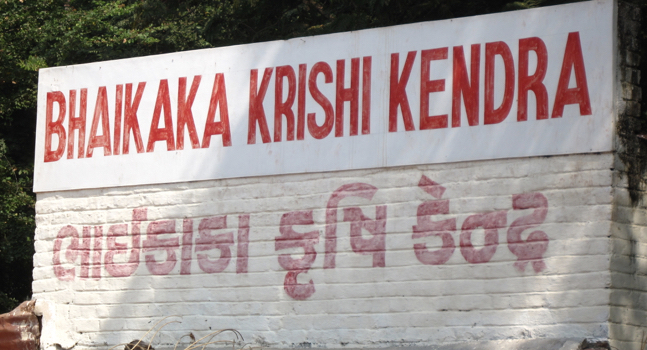
This was the first stop on my two-week biodynamic learning journey with dozens of international biodynamic farmers and leaders in India. We spent four days on the farm, learning about its operations and history, hearing from other biodynamic initiatives in India, and eating an amazing variety of delicious food fresh from the farm.
Hundreds of farmers from India and elsewhere have come to this farm to learn biodynamics from founder and owner Sarvdaman Patel, as well as Peter Proctor, who introduced biodynamics here and many other places in India. Mr. Patel hosted us all with incredible generosity, and it was a wonderful way to begin the trip.
Stay tuned for several more posts on the rest of my travels in India.
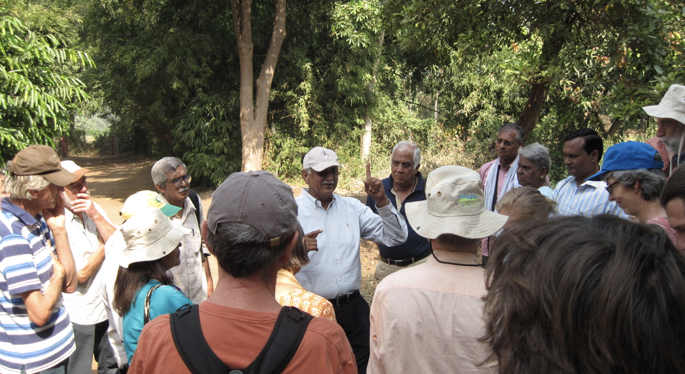 Touring the farm with Sarvdaman Patel (center), owner and founder of BKK and current President of the Biodynamic Association of India.
Touring the farm with Sarvdaman Patel (center), owner and founder of BKK and current President of the Biodynamic Association of India.
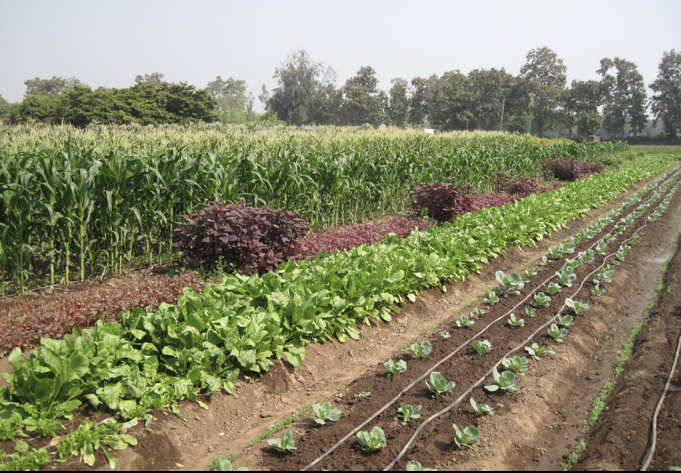 Carefully tended vegetable fields feed the workers and the local community.
Carefully tended vegetable fields feed the workers and the local community.
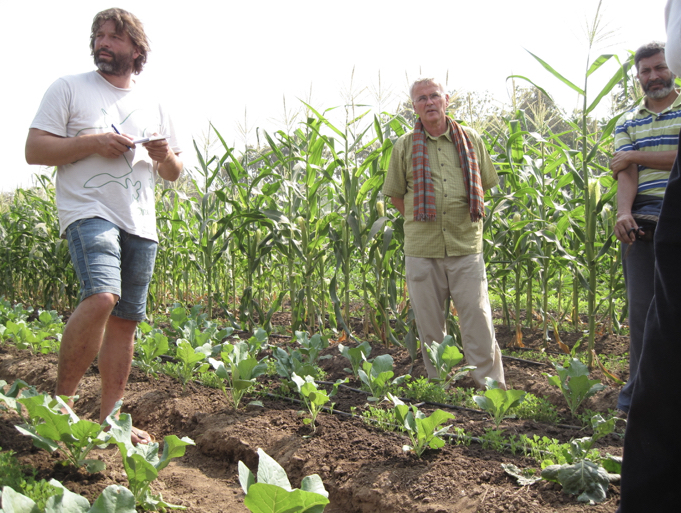 Fenugreek is interplanted with many of the vegetables to deter pests, add nitrogen to the soil, and provide an additional food crop from the growing space.
Fenugreek is interplanted with many of the vegetables to deter pests, add nitrogen to the soil, and provide an additional food crop from the growing space.
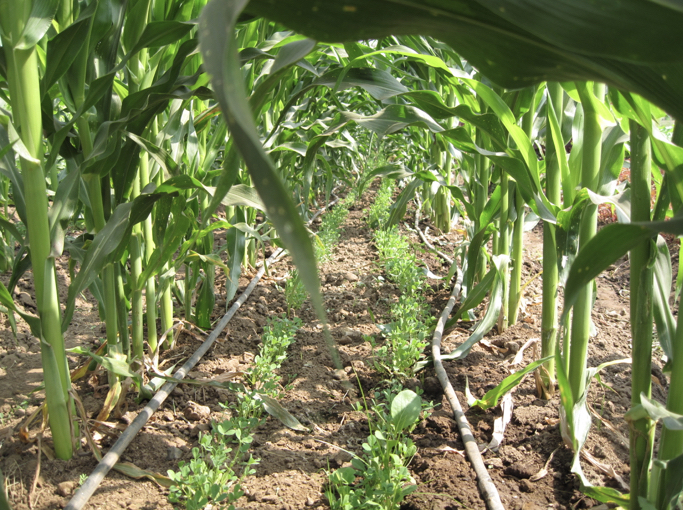 Jean-Michel Florin, co-leader of the Agriculture Section, observing banana trees at BKK.
Jean-Michel Florin, co-leader of the Agriculture Section, observing banana trees at BKK.
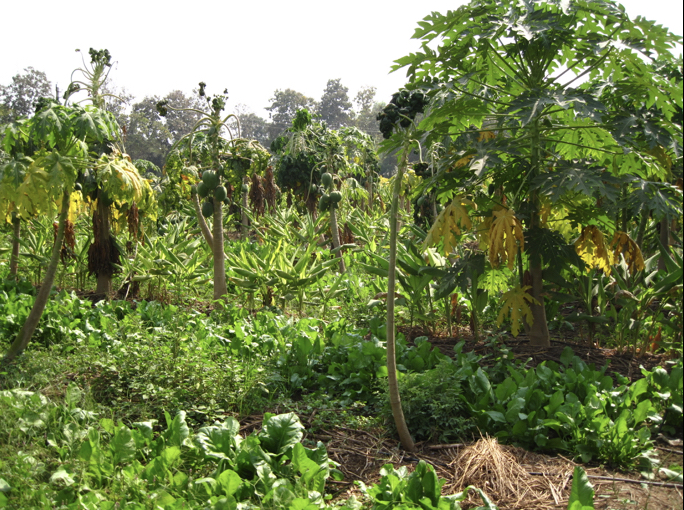 Papaya interplanted with spinach. Many of the trees are affected by disease, and Sarvdaman Patel plans to save seed from the healthiest among them to select for disease resistance.
Papaya interplanted with spinach. Many of the trees are affected by disease, and Sarvdaman Patel plans to save seed from the healthiest among them to select for disease resistance.
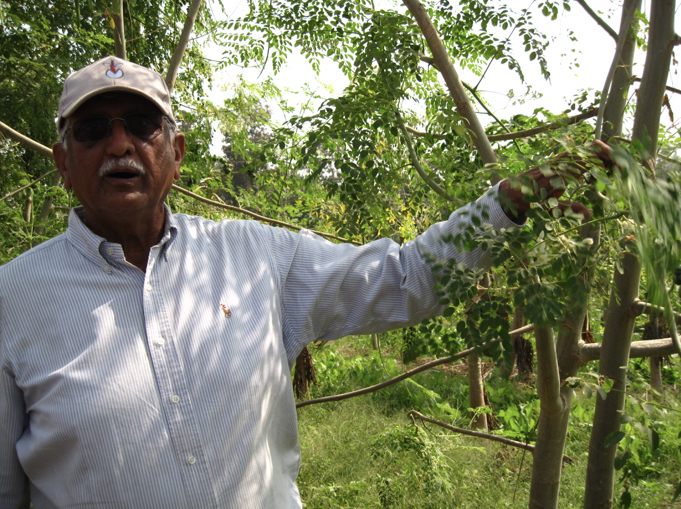 In addition to vegetables and fruit, BKK grows moringa, a widely popular superfood known to help regulate blood sugar.
In addition to vegetables and fruit, BKK grows moringa, a widely popular superfood known to help regulate blood sugar.
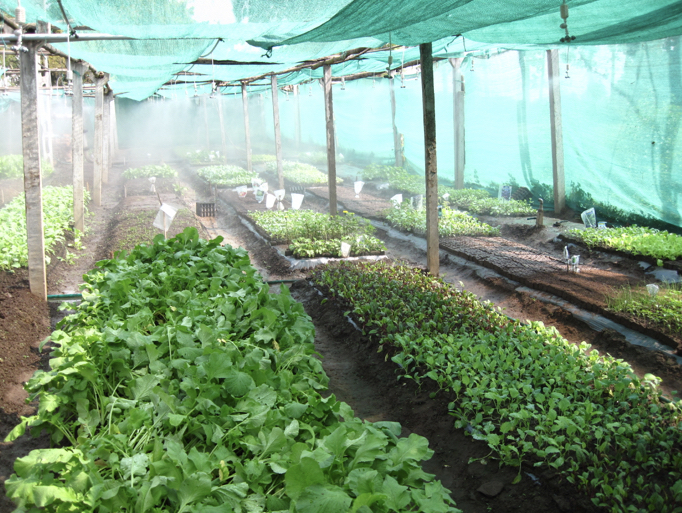 The shaded nursery where seedlings are started in soil blocks.
The shaded nursery where seedlings are started in soil blocks.
 Cows, of course, are an important element of this biodynamic farm. I loved seeing the diversity of horn shapes. Milk sold in the nearby city and to a cooperative is a major source of income for the farm.
Cows, of course, are an important element of this biodynamic farm. I loved seeing the diversity of horn shapes. Milk sold in the nearby city and to a cooperative is a major source of income for the farm.
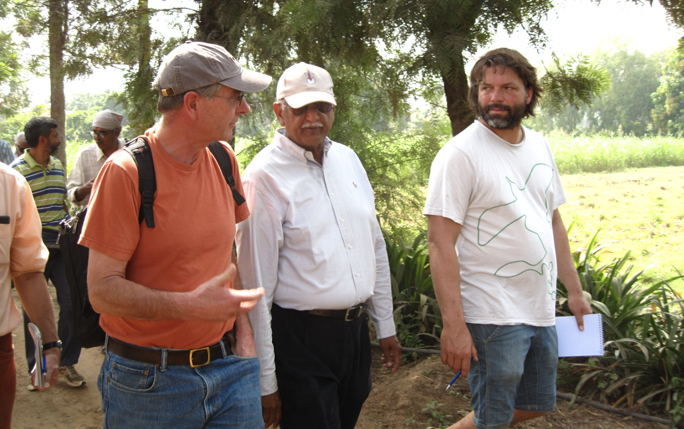 Steffen Schneider of Hawthorne Valley Farm discusses pasture rotations with Sarvdaman Patel.
Steffen Schneider of Hawthorne Valley Farm discusses pasture rotations with Sarvdaman Patel.
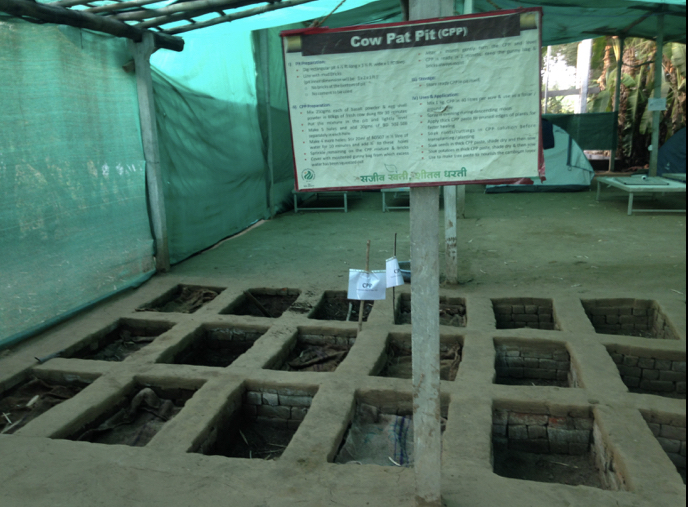 Cow Pat Pit (CPP), also referred to as Barrel Compost, is widely made and used among biodynamic practitioners in India, in a style taught by Peter Proctor.
Cow Pat Pit (CPP), also referred to as Barrel Compost, is widely made and used among biodynamic practitioners in India, in a style taught by Peter Proctor.
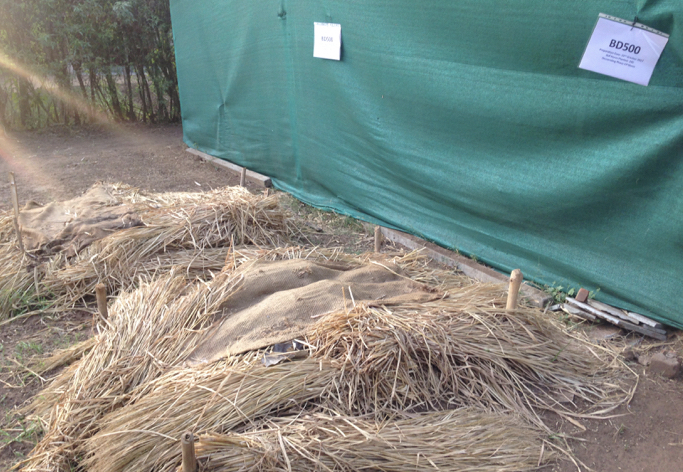 Biodynamic horn manure preparation (500) is buried in the center of the farm as part of hands-on training courses.
Biodynamic horn manure preparation (500) is buried in the center of the farm as part of hands-on training courses.
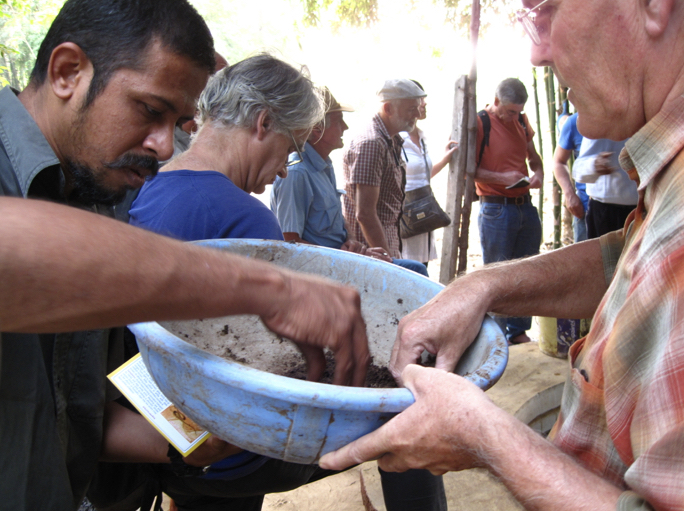 Horn manure is stirred and sprayed on the farm every month when the moon is opposite Saturn.
Horn manure is stirred and sprayed on the farm every month when the moon is opposite Saturn.
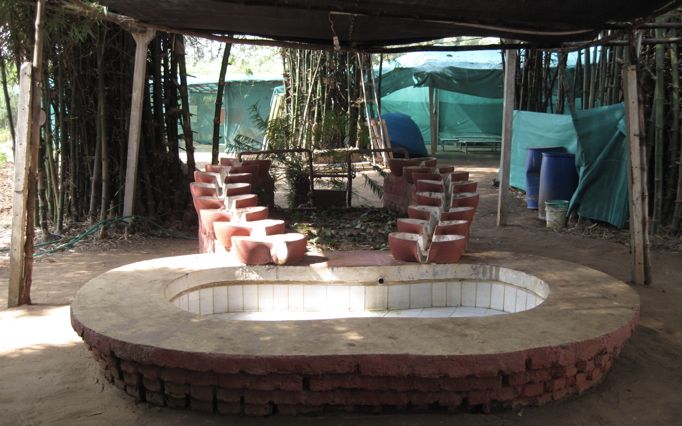 This dual flow form is used to stir biodynamic preparations to be sprayed on the fields.
This dual flow form is used to stir biodynamic preparations to be sprayed on the fields.

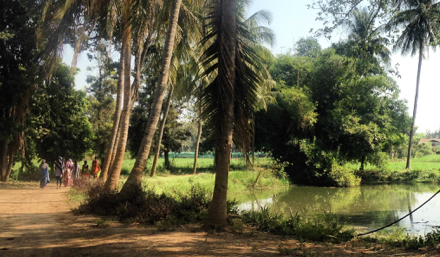 Women in brightly-colored saris do much of the physical work on the farm.
Women in brightly-colored saris do much of the physical work on the farm.
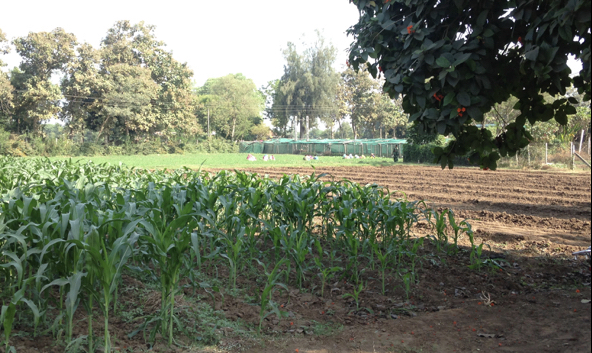
Sarvdaman Patel discusses pest management on his farm.
Thea Maria Carlson is Executive Director of the Biodynamic Association, bringing vitality and renewal to the food system through regenerative agriculture. Thea is a leader, facilitator, educator, and farmer dedicated to building living soil, growing nutritious food, and nurturing vibrant communities.

Añadir nuevo comentario